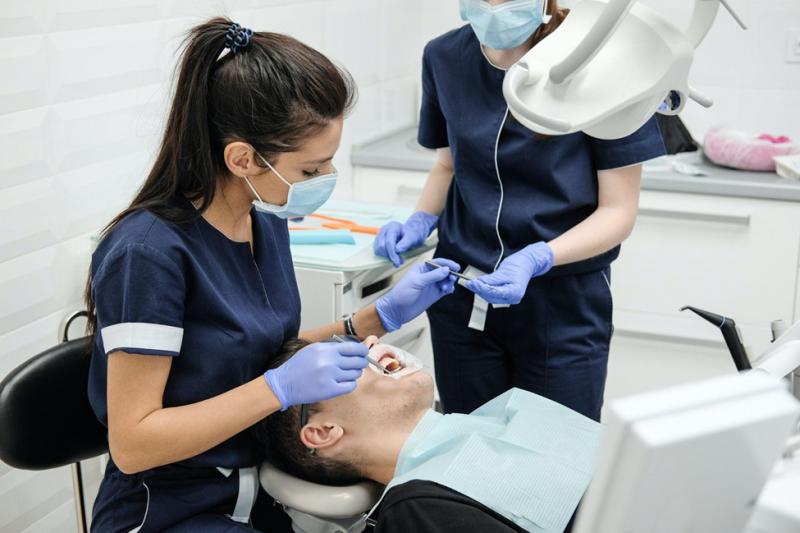Dental Startup: 5 Essential Tools And Equipment Dentists Must Have

Opening your dental practice is an achievement of a lifetime. If you are planning to open one yourself, there are certain things you need to prepare to deliver better services to your patients and prevent them from the risk of getting affected by other diseases.
In this article, you will see the necessary tools and equipment for all dental startups. From handpieces to needed machines, here are ten essentials that you must have when starting up your own dental clinic.
Handpieces
A dental drill or a handpiece is the primary tool of all dentists. One important use of this tool is that it improves the efficiency of dental procedures. Moreover, it has a wide selection of choices that dentists use in performing various dental services like removing plaque or damaging parts of a tooth. Meanwhile, some handpieces are only used for specific procedures.
The tool’s speed and design usually classify handpieces. The type of handpiece you will need will depend on what type of dental surgery you will be doing. Nonetheless, they are equally valuable and necessary to dental practices.
Wrist Wraps
Since dentists work mainly with their hands and wrist, they will need to take care of them and prepare proper support to avoid future physical problems. As years go by to the practice, some dentists are threatened with hand tingling and numbness that could affect their work. It would be best to prepare preventive measures as someone in the same industry to prevent that.
Wrist Wraps are tools that support their wrist joints during dental procedures, especially during long procedures. It increases the likelihood of experiencing extreme fatigue and end to cord pullback forces. So rather than a tool for your clients, it is a tool for you as a dentist to help you in the long run.
Suction Device
A suction device aids the dentist in every dental procedure. While doing dental procedures, saliva can build up inside the mouth and can occlude vision or block tools from doing their work properly. The dental suction device helps in sipping saliva and other debris caused by these procedures inside the mouth.
Additionally, excess saliva can make the patient uneasy. With a good suction device, patients feel comfortable throughout the procedure. Suction can also prevent aerosol and harmful plumes from forming while the dentist is performing. As a result, it helps keep the operating room sterile while keeping the patient’s mind at ease.
Protective Equipment
Common types of protective equipment include face shields, mouth masks, and protective eyewear. These tools serve as a barrier between a patient and a dentist from harmful microorganisms that can be transmitted through saliva. The mentioned protective equipment secures the eyes and mouth of the dentist as they tend to their patient.
Another example of protective equipment is a glove. Disposable gloves are one of the essential pieces of protective equipment a dentist must have. Since dentists work inside a person’s mouth, it would be best to wear gloves to protect themselves and to prevent cross-contamination.
Dental Sterilization Equipment
Sterilization ensures that your tools and instruments that can be used again are disinfected and decontaminated after a procedure. It also prevents the bacteria from growing on your dental devices so that it would be safer for your patients. Having your dental sterilization equipment in your clinic is a minimum required by law and a must to keep your practice in a much safer and sterile environment.
Here are the common types of sterilization equipment dentists use for their dental practice.
- This sterilizer uses dry heat for sterilization. Autoclave sterilization uses heat in killing microorganisms in your dental tools efficiently. It is because large numbers of tools can fit in an autoclave.
Moreover, it is delivered by pressurized steam that reaches high temperatures to sterilize an instrument properly. An autoclave is the most popular type of sterilization equipment.
- Dry Heat Sterilization. Meanwhile, this type of sterilizer works through conduction, where the item absorbs heat then passes inwardly to the next layer of the instrument.
The temperature usually reaches around 300 degrees Fahrenheit, and it takes 12 to 150 minutes for the sterilization to complete. This inexpensive equipment does not cause toxic fumes and preserves metal dental tools.
- Unsaturated Chemical-Vapor Sterilizers. This method of sterilization utilizes a chemical solution in a closed pressurized chamber.
The primary types of solution are alcohol and 0.23% formaldehyde. One of the benefits of this equipment is that it does not risk the carbon instruments to rust because they also dry altogether quicker than with other sterilization equipment.
Final Thoughts
Opening a dental practice entails responsibility for the wellbeing of your patients. They will entrust you with their oral care, and thus you must offer back with utmost care. Keep in mind that you must invest in tools that are significant to your clinic. Therefore, having the right tools and equipment should be the top of your priorities.
More to Read:
Previous Posts:





